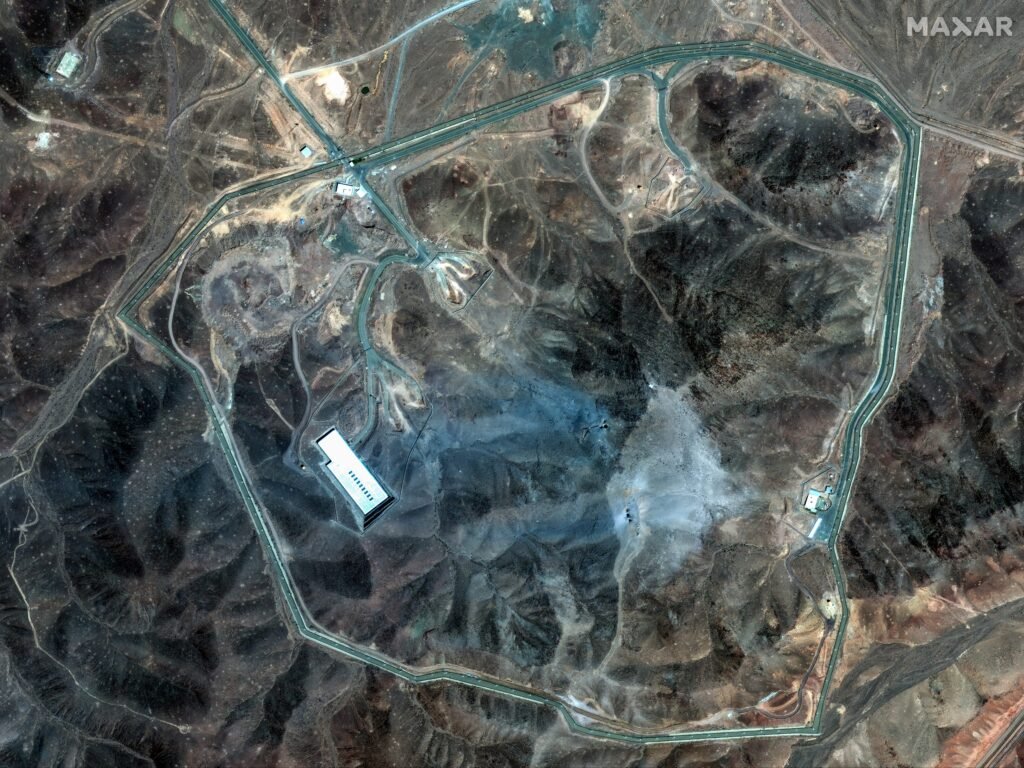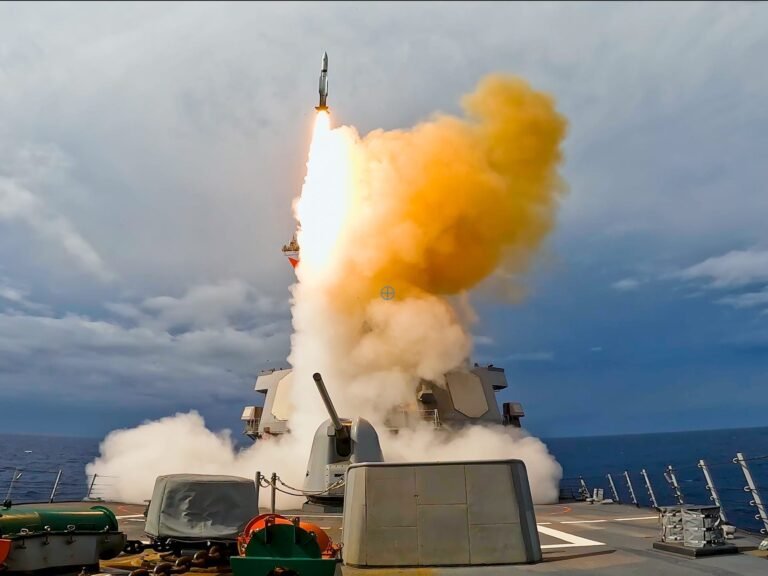
Satellite image ©2025 Maxar Technologies
- New satellite images show damage after US airstrikes at Iran’s Fordow nuclear facilities.
- Fordow was one of three Iranian nuclear sites that the US bombed early Sunday morning (local time).
- The strikes came amid an Israeli campaign to degrade Iran’s nuclear program.
New satellite imagery reveals damage at the Fordow nuclear facility in Iran after US military aircraft bombed the site.
In the images, which were captured on Sunday by the US commercial satellite imaging company Maxar Technologies and obtained by Business Insider, several large holes or craters can be seen on a ridge over the underground complex at Fordow, south of Tehran.
The images show what looks like a layer of dust or debris caused by the US airstrikes over the area, and several tunnel entrances that lead to the underground facility appear to be blocked with dirt.
Satellite image ©2025 Maxar Technologies
Satellite image ©2025 Maxar Technologies
President Donald Trump announced early Sunday morning local time that the US had attacked Iran’s Fordow, Natanz, and Esfahan nuclear facilities in what he later described as a “spectacular military success.”
He said that US aircraft dropped a “full payload” of bombs on Fordow, one of Iran’s main nuclear enrichment facilities. The site is buried deep in the side of a mountain and is the country’s most hardened facility.
Satellite image ©2025 Maxar Technologies
Satellite image ©2025 Maxar Technologies
Gen. Dan Caine, the chairman of the Joint Chiefs of Staff, said seven B-2 Spirit stealth bombers dropped a total of 14 heavy bunker-buster bombs on Iran’s nuclear facilities. He described the operation, known as Midnight Hammer, as highly secretive and complex.
Speaking to reporters early on Sunday, Caine said that the B-2s dropped the 30,000-pound GBU-57 Massive Ordnance Penetrator, or MOP, which is the US military’s largest non-nuclear bomb and believed to be the only weapon that is capable of penetrating Iran’s deepest nuclear facilities like Fordow.
It marked the first-ever operational use of the MOP, he added.
Satellite image ©2025 Maxar Technologies
Satellite image ©2025 Maxar Technologies
During a press conference, Caine said that over 125 US aircraft — a mix of the B-2s, 4th- and 5th-generation fighter jets, and aerial refueling tankers — were involved in the operation, which consisted of a considerable amount of deception.
He said that American forces used 75 precision-guided weapons against Iranian targets, including the 14 MOPs, and more than two dozen Tomahawk cruise missiles launched from a submarine somewhere in the Middle East.
Caine said the battle damage assessment will take some time, although he said initial indications are that all three Iranian nuclear sites that were struck sustained damage and destruction.
Satellite image ©2025 Maxar Technologies
The US bombing came after a week of sweeping Israeli airstrikes across Iran that officials said were intended to degrade the country’s nuclear program and military capabilities. Trump, who had long pushed Tehran to agree to a new nuclear deal, had spent the past few days weighing whether to join Israel in its campaign.
Israeli Prime Minister Benjamin Netanyahu, who has preferred a military solution to Iran’s nuclear program, praised Trump for attacking the Iranian nuclear sites.
Since June 13, Israeli fighter jets have targeted Iran’s nuclear sites, top scientists, senior commanders, missile launchers, air defenses, bases, warplanes, weapons production facilities, and other high-profile military infrastructure.
Iran has retaliated by launching hundreds of ballistic missiles and drones at Israel, many of which have been intercepted.
The US bombing is a major escalation in the conflict that could see Iran retaliate by targeting American forces, as Tehran has threatened to do. The Pentagon has a large presence in the Middle East, consisting of warships, aircraft carriers, fighter jets, and ground troops.
Both Trump and Pentagon leadership have called for peace, warning Iran it could see more strikes if that can’t be achieved.


